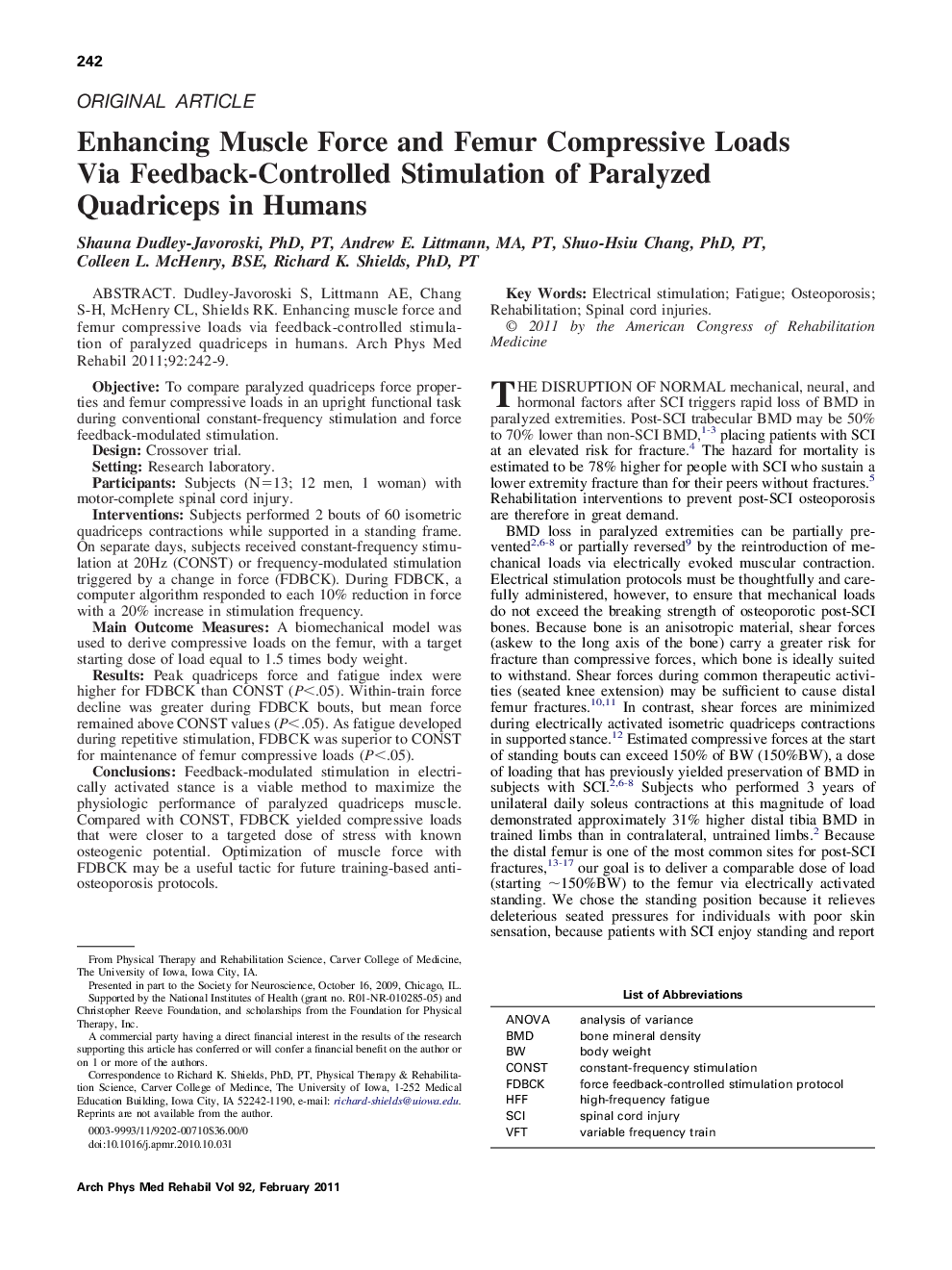| کد مقاله | کد نشریه | سال انتشار | مقاله انگلیسی | نسخه تمام متن |
|---|---|---|---|---|
| 3450483 | 1595743 | 2011 | 8 صفحه PDF | دانلود رایگان |

Dudley-Javoroski S, Littmann AE, Chang S-H, McHenry CL, Shields RK. Enhancing muscle force and femur compressive loads via feedback-controlled stimulation of paralyzed quadriceps in humans.ObjectiveTo compare paralyzed quadriceps force properties and femur compressive loads in an upright functional task during conventional constant-frequency stimulation and force feedback-modulated stimulation.DesignCrossover trial.SettingResearch laboratory.ParticipantsSubjects (N=13; 12 men, 1 woman) with motor-complete spinal cord injury.InterventionsSubjects performed 2 bouts of 60 isometric quadriceps contractions while supported in a standing frame. On separate days, subjects received constant-frequency stimulation at 20Hz (CONST) or frequency-modulated stimulation triggered by a change in force (FDBCK). During FDBCK, a computer algorithm responded to each 10% reduction in force with a 20% increase in stimulation frequency.Main Outcome MeasuresA biomechanical model was used to derive compressive loads on the femur, with a target starting dose of load equal to 1.5 times body weight.ResultsPeak quadriceps force and fatigue index were higher for FDBCK than CONST (P<.05). Within-train force decline was greater during FDBCK bouts, but mean force remained above CONST values (P<.05). As fatigue developed during repetitive stimulation, FDBCK was superior to CONST for maintenance of femur compressive loads (P<.05).ConclusionsFeedback-modulated stimulation in electrically activated stance is a viable method to maximize the physiologic performance of paralyzed quadriceps muscle. Compared with CONST, FDBCK yielded compressive loads that were closer to a targeted dose of stress with known osteogenic potential. Optimization of muscle force with FDBCK may be a useful tactic for future training-based antiosteoporosis protocols.
Journal: Archives of Physical Medicine and Rehabilitation - Volume 92, Issue 2, February 2011, Pages 242–249